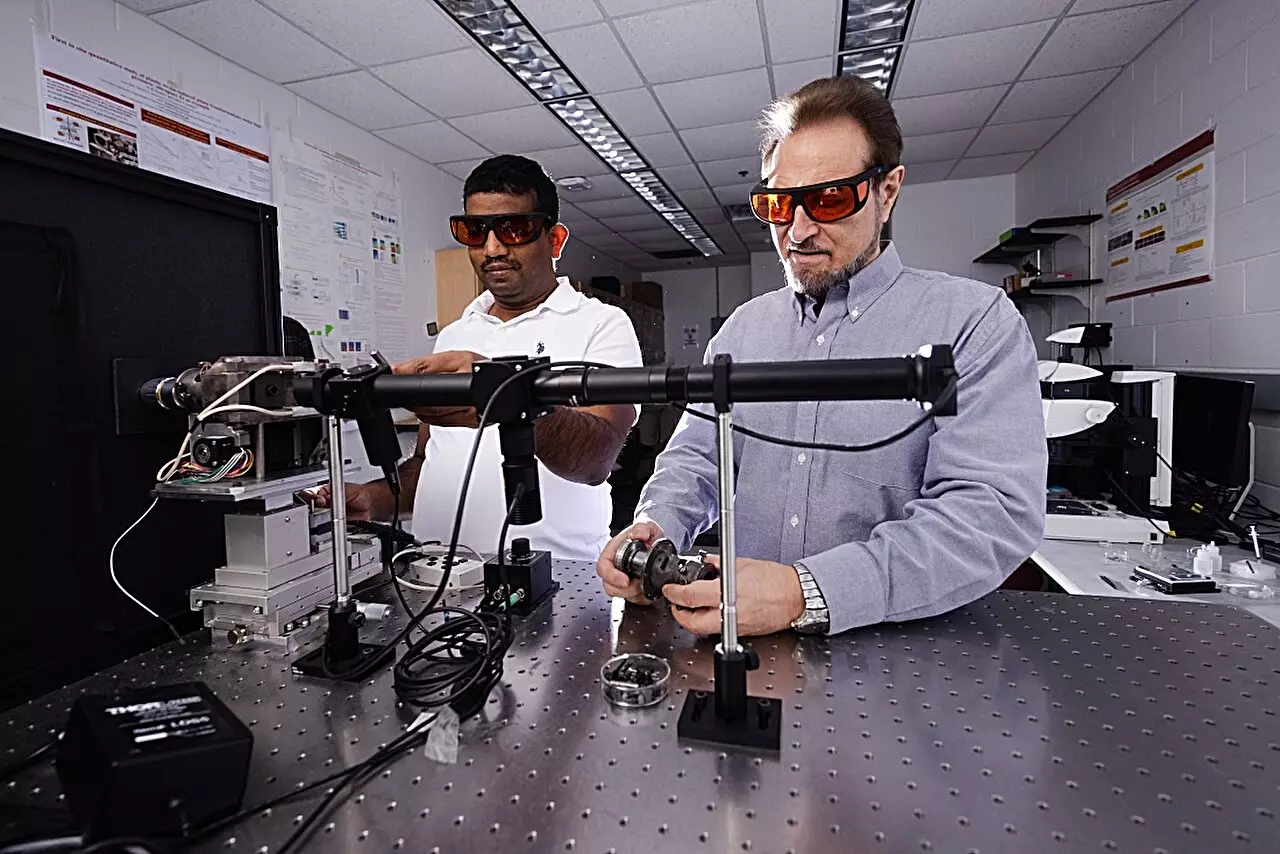In a world where advancements in technology dictate the trajectory of progress, the study of material sciences has emerged as a key field of innovation. At the forefront of this research is an intriguing project led by Valery Levitas, an esteemed professor at Iowa State University. Since relocating from Europe to the U.S. in 1999, Levitas has been investigating the interactions of materials under extreme conditions using a sophisticated device known as a rotational diamond anvil cell. By applying pressure and shear movements to elemental substances like silicon, Levitas and his team are pioneering research that not only questions existing paradigms but also opens the door to new applications.
Silicon plays an instrumental role in the electronics industry, and understanding its behavior under stress can unlock significant advancements. The research team’s recent publication in the journal Nature Communications highlights critical findings regarding silicon’s phase transformations—a process through which the crystal structure of silicon changes when subjected to varied pressures and shear conditions. Levitas pointed out that while many studies have previously examined silicon under high pressures, few have ventured into the less-explored terrain of combining pressure and plastic shear deformation. This fresh perspective invites a radical re-evaluation of silicon’s properties and potential applications.
Central to this research is the concept of plastic strain-induced phase transformation. When subjected to the intricate pressures exerted by the rotational diamond anvil cell, silicon exhibits unexpected transitions between its various phases. In their experimental conditions, the team manipulated silicon particles at three different nanometer scales—1 millionth of a meter, 30 billionths of a meter, and 100 billionths of a meter. These experiments revealed a remarkable transformation of silicon’s “Si-I” crystal phase to the “Si-II” phase at lower pressures than previously recorded. Specifically, a milestone was reached when pressure levels typically associated with 16.2 gigapascals were significantly dropped to just 0.3 gigapascals, indicating a 54-fold reduction. This breakthrough exemplifies Levitas’s vision to bring forth material changes not just through increasing pressure but through innovative manipulation of microstructural properties.
Upon exploring these transformations, the researchers found that different phases of silicon correspond to a variety of physical properties, making this study of immense interest for industrial applications. The ramifications of Levitas’s findings hint at a future where the creation of nanocomposites with optimal electronic, optical, and mechanical properties becomes increasingly feasible. Instead of laboring under the impracticalities of high-pressure environments—often a significant barrier for industrial adoption—Levitas’s methods leverage lower pressures to achieve comparable properties. This shift could revolutionize the approach industries take toward innovative materials.
Levitas’s ongoing research doesn’t just place emphasis on silicon but also embodies a broader philosophy that promotes the reimagination of material science. By challenging the conventions surrounding phase transformations and exploring reactions at lower pressures, he has set the stage for future inquiries that may lead to groundbreaking discoveries. As Levitas himself noted, if he did not anticipate detecting phase transformations at low pressures, the team might never have conducted these crucial experimental checks.
The work of Valery Levitas and his collaborators represents a paradigm shift in the understanding of material behavior under stress. Their research not only sets the stage for future explorations in silicon and its myriad of transformations but also heralds a new era in material science—one where practical applications converge with theoretical curiosity to unveil unexpected possibilities. As the quest for advanced materials continues, the intersection of mechanics, physics, and applied mathematics will undoubtedly yield further insights, shaping the technological landscape for decades to come.

